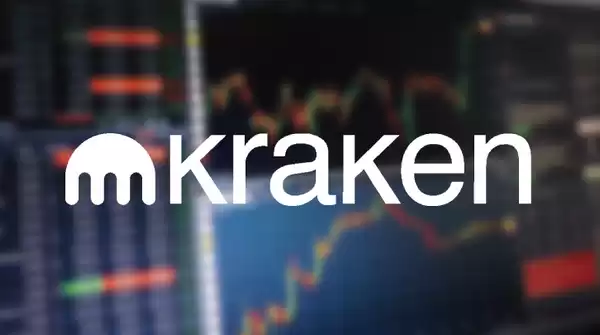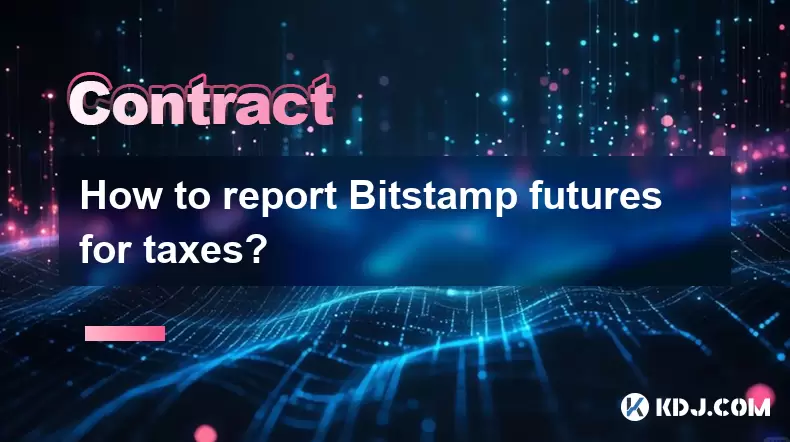-
 Bitcoin
Bitcoin $115000
0.12% -
 Ethereum
Ethereum $3701
4.50% -
 XRP
XRP $3.081
2.99% -
 Tether USDt
Tether USDt $0.0000
-0.01% -
 BNB
BNB $767.9
1.45% -
 Solana
Solana $169.5
3.13% -
 USDC
USDC $0.9999
0.01% -
 Dogecoin
Dogecoin $0.2106
4.30% -
 TRON
TRON $0.3334
1.62% -
 Cardano
Cardano $0.7564
2.54% -
 Stellar
Stellar $0.4165
0.76% -
 Hyperliquid
Hyperliquid $38.75
0.25% -
 Sui
Sui $3.593
3.00% -
 Chainlink
Chainlink $17.08
3.59% -
 Bitcoin Cash
Bitcoin Cash $573.6
4.35% -
 Hedera
Hedera $0.2508
-0.84% -
 Avalanche
Avalanche $23.07
6.46% -
 Ethena USDe
Ethena USDe $1.001
-0.02% -
 Litecoin
Litecoin $120.8
8.17% -
 UNUS SED LEO
UNUS SED LEO $8.943
-0.32% -
 Toncoin
Toncoin $3.400
-5.60% -
 Shiba Inu
Shiba Inu $0.00001255
1.54% -
 Uniswap
Uniswap $9.908
6.32% -
 Polkadot
Polkadot $3.718
2.10% -
 Monero
Monero $303.0
-0.74% -
 Dai
Dai $0.9999
-0.02% -
 Bitget Token
Bitget Token $4.392
0.91% -
 Cronos
Cronos $0.1403
6.31% -
 Pepe
Pepe $0.00001076
1.13% -
 Aave
Aave $267.2
1.80%
Kraken leverage trading tutorial
Kraken's leverage trading service enables traders to amplify their potential profits but also exposes them to higher levels of risk, requiring careful understanding of leverage ratios and risk management strategies.
Nov 11, 2024 at 11:00 pm

Kraken Leverage Trading Tutorial
Introduction
Kraken is one of the leading cryptocurrency exchanges that offers leverage trading services. Leverage trading allows traders to borrow funds from the exchange to increase their potential profits, but it also amplifies potential losses. This tutorial will guide you through the steps of leverage trading on Kraken, from selecting a trading pair and setting up the leverage parameters to placing an order and managing your risk.
Step 1: Understand Leverage Trading
Leverage trading involves borrowing funds from an exchange to increase your trading capital. By using leverage, traders can potentially magnify their profits, but they also expose themselves to higher levels of risk. The amount of leverage you use is expressed as a ratio, such as 2x or 5x. For example, if you use 5x leverage, you will be borrowing four times your initial investment.
Step 2: Choose a Trading Pair
Kraken offers leverage trading for a wide range of cryptocurrency pairs. When selecting a trading pair, consider the following factors:
- Liquidity: Choose a pair with high trading volume to ensure that your orders can be executed quickly and at a fair price.
- Volatility: Leverage trading is best suited for volatile assets, as they offer the potential for higher returns. However, be aware that increased volatility also carries additional risk.
- Your Risk Tolerance: Select a trading pair that aligns with your risk appetite. Higher leverage ratios are suitable for aggressive traders, while lower ratios are more appropriate for conservative traders.
Step 3: Set Up Leverage Parameters
Once you have chosen a trading pair, you need to set up the leverage parameters for your trade. These parameters include:
- Leverage Ratio: Determine the amount of leverage you wish to apply to your trade. Higher leverage ratios amplify potential profits but also increase risk.
- Order Type: Choose whether you want to place a market order or a limit order. Market orders are executed immediately at the current market price, while limit orders are executed when the market price reaches a specified level.
- Position Size: Determine the size of your trading position. This is expressed in the base currency of the trading pair.
Step 4: Place an Order
To place a leverage trade on Kraken, navigate to the "Trading" tab and select the "Margin Trading" option. From there, follow these steps:
- Select the trading pair and specify the order type and position size.
- Enter the desired leverage ratio.
- Review the order details and confirm the order execution.
Step 5: Manage Your Risk
Leverage trading can amplify both profits and losses. To manage risk, consider the following strategies:
- Use Stop-Loss Orders: Place stop-loss orders to automatically close your position when the market price reaches a specified level, limiting your potential losses.
- Monitor Your Position Regularly: Keep an eye on your trading position and adjust your leverage or close the trade if necessary.
- Manage Your Margin Level: Kraken's Margin Trading Tool provides a Margin Level indicator that shows the ratio of your equity to your margin requirement. Maintain a healthy Margin Level to avoid a Margin Call.
Disclaimer:info@kdj.com
The information provided is not trading advice. kdj.com does not assume any responsibility for any investments made based on the information provided in this article. Cryptocurrencies are highly volatile and it is highly recommended that you invest with caution after thorough research!
If you believe that the content used on this website infringes your copyright, please contact us immediately (info@kdj.com) and we will delete it promptly.
- Velo Universe, DEX, and DeFi Security: Navigating the Future of Decentralized Trading
- 2025-08-05 09:25:13
- Bitget Wallet Revolutionizes Solana with Gas-Free Transactions: A New Era for DeFi
- 2025-08-05 09:25:13
- Ozak AI, Crypto Boom, and ROI Potential: Is This the Next Big Thing?
- 2025-08-05 09:25:24
- Solana's ETF Hopes & the All-Time High Chase: Is SOL Set to Soar?
- 2025-08-05 09:25:24
- Coinbase's Brian Armstrong and the Art of Focused Work: A Deep Dive
- 2025-08-05 09:25:30
- Uniswap Price Prediction: Bullish Reversal on the Horizon?
- 2025-08-05 09:25:30
Related knowledge

Why is my Bitstamp futures position being liquidated?
Jul 23,2025 at 11:08am
Understanding Futures Liquidation on BitstampFutures trading on Bitstamp involves borrowing funds to open leveraged positions, which amplifies both po...

How to report Bitstamp futures for taxes?
Jul 30,2025 at 08:35am
Understanding Bitstamp Futures and Taxable EventsWhen trading Bitstamp futures, it’s essential to recognize that these financial instruments are treat...

Does Bitstamp offer inverse contracts?
Jul 23,2025 at 01:28pm
Understanding Inverse Contracts in Cryptocurrency TradingIn the realm of cryptocurrency derivatives, inverse contracts are a specific type of futures ...

What is the difference between futures and perpetuals on Bitstamp?
Jul 27,2025 at 05:08am
Understanding Futures Contracts on BitstampFutures contracts on Bitstamp are financial derivatives that allow traders to speculate on the future price...

How to find your Bitstamp futures trade history?
Jul 23,2025 at 08:07am
Understanding Bitstamp and Futures Trading AvailabilityAs of the current state of Bitstamp’s service offerings, it is critical to clarify that Bitstam...

Can I use a trailing stop on Bitstamp futures?
Jul 23,2025 at 01:42pm
Understanding Trailing Stops in Cryptocurrency TradingA trailing stop is a dynamic type of stop-loss order that adjusts automatically as the price of ...

Why is my Bitstamp futures position being liquidated?
Jul 23,2025 at 11:08am
Understanding Futures Liquidation on BitstampFutures trading on Bitstamp involves borrowing funds to open leveraged positions, which amplifies both po...

How to report Bitstamp futures for taxes?
Jul 30,2025 at 08:35am
Understanding Bitstamp Futures and Taxable EventsWhen trading Bitstamp futures, it’s essential to recognize that these financial instruments are treat...

Does Bitstamp offer inverse contracts?
Jul 23,2025 at 01:28pm
Understanding Inverse Contracts in Cryptocurrency TradingIn the realm of cryptocurrency derivatives, inverse contracts are a specific type of futures ...

What is the difference between futures and perpetuals on Bitstamp?
Jul 27,2025 at 05:08am
Understanding Futures Contracts on BitstampFutures contracts on Bitstamp are financial derivatives that allow traders to speculate on the future price...

How to find your Bitstamp futures trade history?
Jul 23,2025 at 08:07am
Understanding Bitstamp and Futures Trading AvailabilityAs of the current state of Bitstamp’s service offerings, it is critical to clarify that Bitstam...

Can I use a trailing stop on Bitstamp futures?
Jul 23,2025 at 01:42pm
Understanding Trailing Stops in Cryptocurrency TradingA trailing stop is a dynamic type of stop-loss order that adjusts automatically as the price of ...
See all articles

























































































